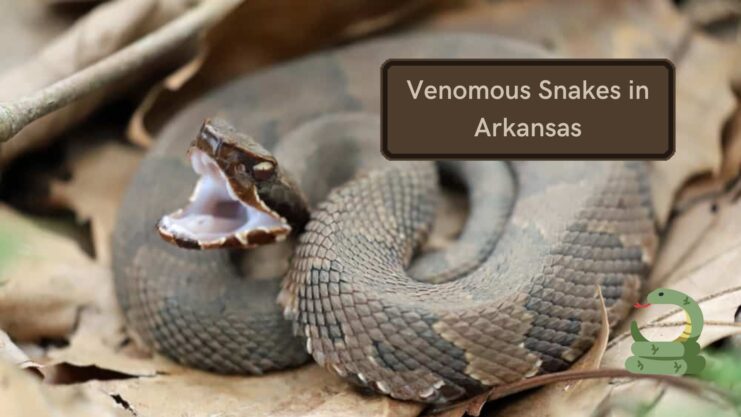Arkansas, a state renowned for its diverse wildlife and stunning landscapes, is home to a myriad of snake species. Among the 45 species of snakes found in the state, six are venomous and pose a potential threat to humans. These venomous snakes, while intimidating, play a crucial role in maintaining the balance of the ecosystem.
Understanding these creatures, their characteristics, habitats, and behaviors, is not only fascinating but also essential for ensuring safety during outdoor activities. This comprehensive guide aims to provide valuable insights into these venomous snakes, offering a deeper understanding of their role in the environment and how to coexist with them safely.
A Guide to the Six Venomous Snakes of Arkansas
1. Copperhead (Agkistrodon contortrix)
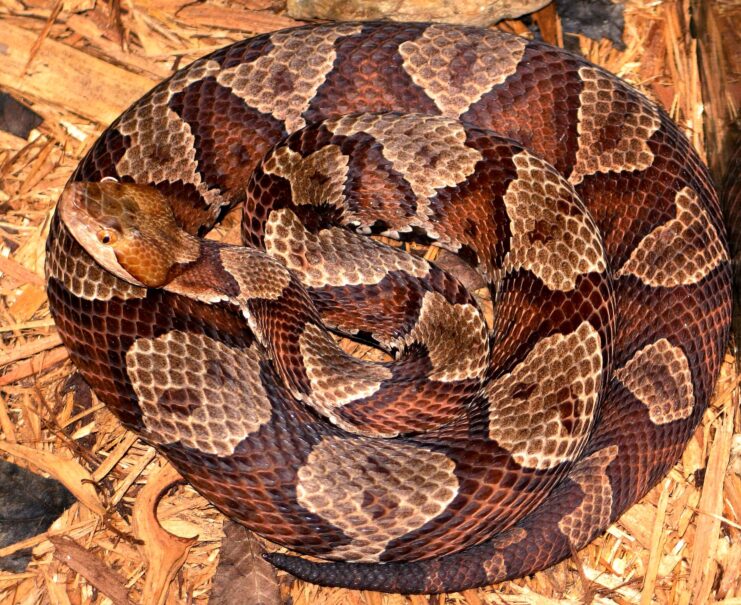
The Copperhead (Agkistrodon contortrix) is one of the most common venomous snakes found in Arkansas. This snake is easily identifiable by its distinctive hourglass-shaped bands on a body that ranges in color from tan to pinkish-tan. Copperheads are pit vipers, meaning they have a heat-sensing pit organ located between the eye and the nostril on both sides of the head. This organ helps them detect prey and potential threats. They are primarily nocturnal, but can also be active during the day, especially in cooler weather.
Copperheads are ambush predators, preferring to lie in wait for their prey rather than actively hunting. Their diet mainly consists of small rodents, birds, frogs, and insects. When threatened, they often freeze in place, relying on their excellent camouflage to avoid detection. However, if they feel cornered, they will not hesitate to strike. While their venom is not typically fatal to humans, a bite from a Copperhead can still be extremely painful and requires immediate medical attention.
Key Information:
- Scientific Name: Agkistrodon contortrix
- Family: Viperidae
- Habitat: Woodlands, rocky areas, and around bodies of water
- Diet: Small rodents, birds, frogs, and insects
- Behavior: Primarily nocturnal, ambush predators
- Danger to Humans: Venomous, but bites are rarely fatal to humans
- Conservation Status: Not currently threatened or endangered
- Length: Adult Copperheads typically range from 2 to 3 feet in length.
- Lifespan: In the wild, Copperheads can live up to 18 years.
- Bite incidents: According to the Arkansas Department of Health, Copperheads account for the majority of snakebites in the state, although fatalities are extremely rare.
2. Cottonmouth (Agkistrodon piscivorus)
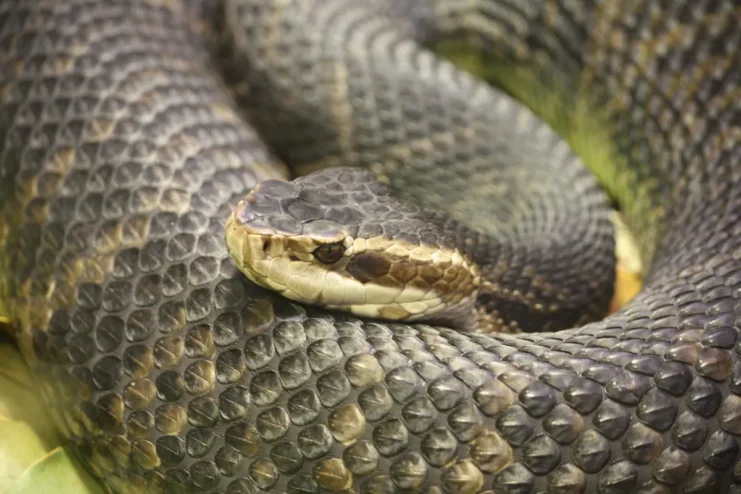
Cottonmouths, also known as Water Moccasins (Agkistrodon piscivorus), are venomous snakes that primarily inhabit aquatic environments in Arkansas. These formidable reptiles have a notable presence in the state’s wetlands, swamps, and marshes, where they demonstrate their exceptional adaptation to aquatic life. However, recent studies have revealed an interesting shift in the distribution patterns of Cottonmouths within Arkansas.
In the past decade, there has been an intriguing expansion of Cottonmouth populations beyond their traditional aquatic habitats. While they remain more abundant in the lowland regions and river systems, sightings of Cottonmouths have been reported in unexpected areas, including the upland regions of the Ozark highlands and the Ouachita Mountains. This expansion into higher elevations signifies their adaptability and resilience as a species, possibly driven by a combination of ecological factors such as climate change and habitat alteration. As a result, hikers and outdoor enthusiasts exploring these scenic mountainous areas now need to be aware of the potential presence of Cottonmouths, even in locations previously considered less suitable for their survival.
3. The Eastern Massasauga Rattlesnake (Sistrurus catenatus)
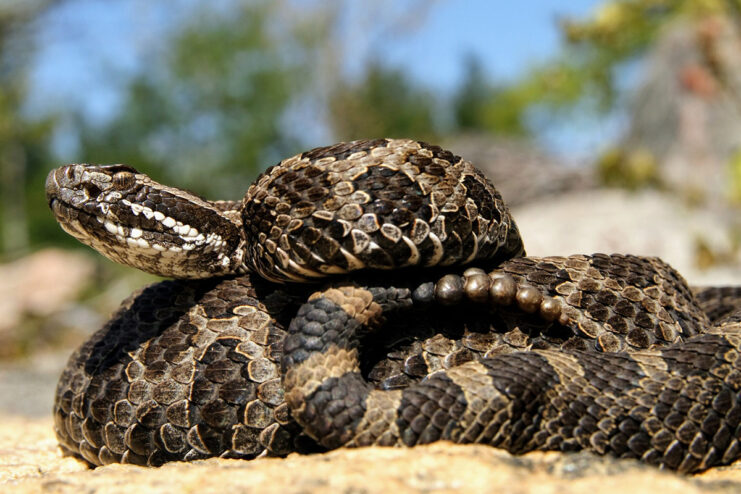
The Eastern Massasauga Rattlesnake (Sistrurus catenatus) is a small but potent venomous snake found in the United States, including parts of Arkansas. This snake is a member of the pit viper family and is the only rattlesnake species found in the state. The Eastern Massasauga is characterized by its thick body, heart-shaped head, vertical pupils, and distinctive rattle at the end of its tail. Its coloration varies from gray to brown, with darker brown blotches along its back, aiding in its camouflage within its preferred habitats of wetlands, marshes, and lowland forests.
Eastern Massasaugas are primarily active during the day in cooler weather and become more nocturnal as temperatures rise. They are ambush predators, lying in wait for small mammals, birds, and amphibians. When threatened, they will often retreat if possible but will rattle their tails as a warning before striking. Their venom is potent and can be dangerous to humans, but they are generally not aggressive unless provoked.
Statistics:
- Length: Adult Eastern Massasaugas typically range from 1.5 to 2.5 feet in length.
- Lifespan: In the wild, Eastern Massasaugas can live up to 14 years.
- Bite incidents: Bites from Eastern Massasaugas are rare due to their shy nature, but their venom can be dangerous to humans.
4. Timber Rattlesnake (Crotalus horridus)

Timber Rattlesnakes are the largest and most dangerous snakes in Arkansas. They have gray, yellow, or yellowish-brown heads and bodies with V-shaped black bands and a reddish stripe down their backs. Their tails are solid black. They are found statewide, particularly in the Ozark National Forest.
For a chilling real-life encounter with these dangerous creatures in the Ozark National Forest, read about this Arkansas man who found himself surrounded by deadly venomous rattlesnakes while hiking.
5. Western Pygmy Rattlesnake (Sistrurus miliarius)
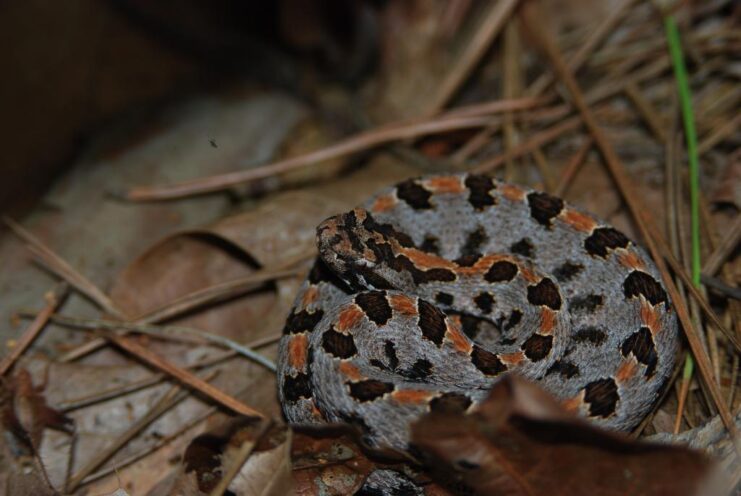
The Western Pygmy Rattlesnake is the smallest of the venomous snakes in the state but can still cause serious harm if bitten. They have brownish to bluish-gray bodies with black blotches and an orange or yellowish-brown stripe running down their backs.
6. Texas Coral Snake (Micrurus tener tener)
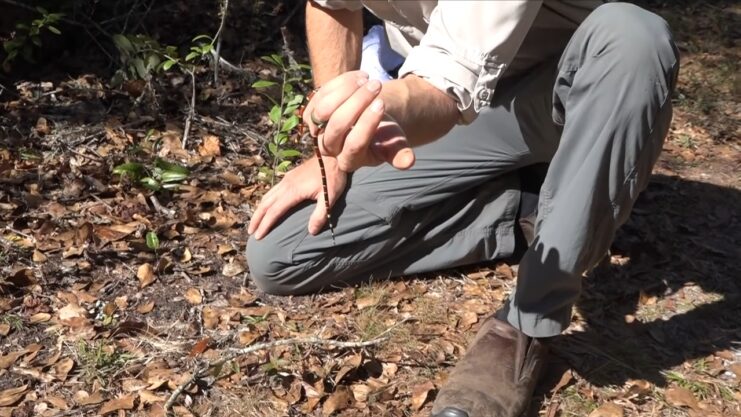
The Texas Coral Snake (Micrurus tener tener) is a highly venomous species native to the southern United States, including Arkansas. It is easily identifiable by its bright coloration, which consists of alternating bands of red and black separated by narrower yellow rings. This snake is typically found in wooded areas, gardens, and near bodies of water, where it hunts for its primary prey, other smaller snakes and lizards.
Despite its potent venom, the Texas Coral Snake is generally shy and will avoid human interaction when possible. It is a rear-fanged snake, meaning it has to chew on its victim to inject its venom, making bites to humans relatively rare. However, any encounter with this snake should be taken seriously. If spotted, it’s best to leave it alone and report the sighting to local wildlife authorities if it’s in a residential area. In the event of a bite, seek medical attention immediately.
| Snake Species | Distinctive Features | Interesting Fact |
|---|---|---|
| Copperhead | Copper-colored head and hourglass-shaped patterns | Copperheads are responsible for more bites on average than any other snake in the U.S. |
| Cottonmouth | Dark color with a thick body and a distinctive white mouth | Cottonmouths are also known as Water Moccasins due to their aquatic habitats. |
| Eastern Massasauga Rattlesnake | Gray to brown color with dark brown blotches along the back | Despite its venomous bite, this snake is generally shy and will avoid human interaction when possible. |
| Timber Rattlesnake | Gray, yellow, or yellowish-brown bodies with V-shaped black bands | They are the largest and most dangerous snakes in Arkansas. |
| Western Pygmy Rattlesnake | Brownish to bluish-gray bodies with black blotches | Despite being the smallest venomous snake in the state, they can still cause serious harm if bitten. |
| Texas Coral Snake | Bright coloration with alternating bands of red and black separated by narrower yellow rings | Despite its potent venom, it is generally shy and bites to humans are relatively rare. |
Safety Measures
Snake safety is an essential aspect of outdoor activities, particularly in regions known for their snake populations. Understanding how to prevent snake encounters and how to respond if an encounter occurs can make a significant difference in ensuring your safety.
Firstly, awareness of your surroundings is crucial. Snakes often reside in tall grass, under rocks, or in fallen logs, so it’s important to be cautious when navigating these areas. Wearing appropriate attire, such as long pants and closed-toe shoes, can provide an extra layer of protection against snake bites.
Secondly, never attempt to handle or provoke a snake. Most snakes are not aggressive and will only bite in self-defense. If you encounter a snake, maintain a safe distance and allow it to move away on its own.
Thirdly, educate yourself about the types of snakes in your area. Knowing which snakes are venomous and what they look like can help you react appropriately during an encounter.
Lastly, in the unfortunate event of a snake bite, seek medical attention immediately. Do not attempt to suck out the venom or apply a tourniquet. Instead, try to remember the snake’s appearance to help medical professionals determine the appropriate treatment.
While Arkansas houses its fair share of venomous snakes, it’s not the only state where these fascinating, if somewhat intimidating, creatures reside. For those curious about how Arkansas’ serpents compare to those in other regions, Florida’s venomous snakes offer an interesting comparison. This insightful article highlights the various species that make the Sunshine State their home.
Conclusion
In conclusion, while venomous snakes can pose a danger, it’s important to remember that they play a crucial role in the ecosystem by controlling other wildlife populations. By educating ourselves about these creatures and taking necessary precautions, we can coexist with them safely. The beauty of Arkansas’s wildlife is a treasure to be respected and protected, and understanding the role of each creature, including venomous snakes, is a step towards preserving this natural heritage.
Finally, remember that while these snakes may be dangerous, they are not out to harm us. They are simply living their lives in the way that nature intended. So the next time you’re out in nature, remember to tread carefully, respect the wildlife, and appreciate the intricate balance of our ecosystem that these snakes help to maintain.
Related Posts:
- Unveiling Venomous Snakes in Georgia: An Exciting…
- Top 5 Films & Series About Motorcycles Of All Time
- The Kings and Queens of Comedy: The Greatest…
- All In! Up Your Poker Game With These 5 Tips in 2024
- Is There Any Strategy to Slot Games? Or Is It All Random?
- Biggest Fish in Arkansas: In Search of the Titans

